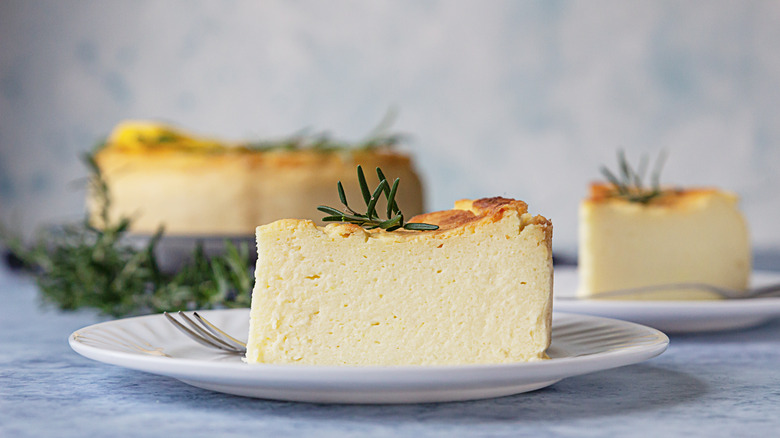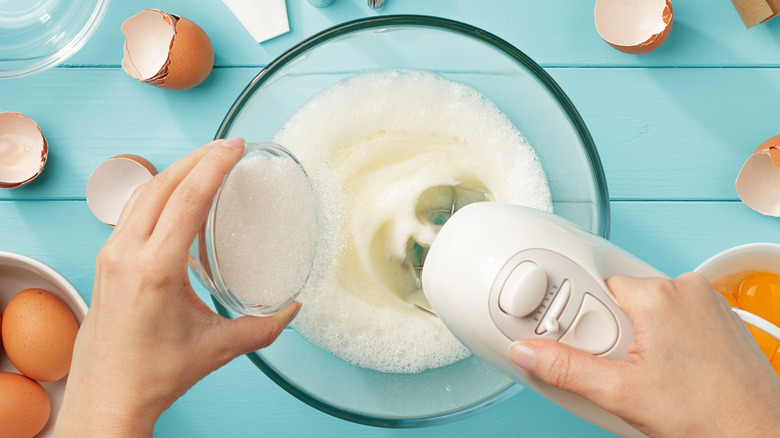The Real Reason Your Cheesecake Cracked
When you think of cheesecake, you probably think of New York, not Greece. As it turns out, this dish originated in the ancient empire well before The Big Apple city ever sunk its teeth into it (via Ferguson Plarre Bakehouses). But the kind of cheesecake we recognize today must be attributed to New Yorker Arnold Reuben, owner of Turf Restaurant in 1929, for using cream cheese in his recipe, per Cook's Info. So, we can thank Reuben for the invention of New York cheesecake!
Cheesecake is known for its rich, creamy quality and delightful graham cracker crust. It is a well-beloved classic, so much so that we have the chain restaurant The Cheesecake Factory dedicated to it in both name and practice. You'd think that because this particular cake is enjoyed so much that it is popular to bake at home, but you'd be wrong. While easy to enjoy, cheesecake is not the easiest to make, and this delicious confection is notorious for cracking under pressure.
Two things that keep cheesecake from cracking
There are two things causing your cheesecake to crack. The first is using cold ingredients; the second is not using a bain-marie.
Room-temperature ingredients are necessary when making the perfect cheesecake. According to Cook's Illustrated, ingredients such as milk, butter, and eggs should only be blended into the bake when they have hit room temperature. This way, they bind together more easily and create a smoother batter texture and, therefore, a substantially smoother crumb to your cake. Moreover, when whipped up together, room temperature ingredients trap air better than cold ingredients and will give you a fluffier bake (via Taste of Home).
If you aren't already using a bain-marie for your more delicate bakes, let's introduce you to one of the coolest chemistry tricks in your cookbook! A bain-marie directly translates to Mary's bath (Mary being the inventor of this handy baking tool).
Essentially, the bain-marie method involves placing whatever you're baking into a larger pan or dish full of hot water; the water should reach about halfway up the original baking pan. Then you put the whole ensemble into the oven to bake. MasterClass explains that the airy batter will be cooked gently through indirect heat by baking your cheesecake in a water bath. In addition, the steam created by the bain-marie will help maintain the cheesecake filling's moisture, preventing cracking caused by the top drying out.

